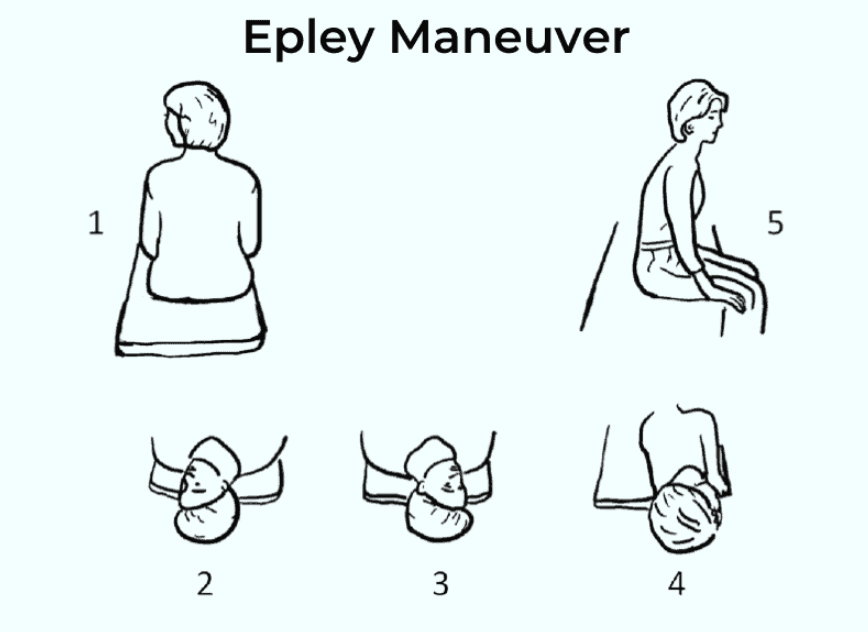Vertigo, a troubling sensation where the world feels like it’s spinning, can leave you feeling disoriented, anxious, and even prone to falls. This debilitating condition can strike suddenly, disrupting daily life and making simple tasks difficult. The good news? There are several effective methods to combat vertigo and restore your sense of balance and stability. From home exercises to specialized rehabilitation, you can take steps to stop vertigo in its tracks.

What Is Vertigo?
Before we dive into the solutions, it’s essential to understand what vertigo is. Vertigo is a type of dizziness that creates the false sense that you or your surroundings are moving or spinning. It’s often linked to inner ear issues, particularly problems with the vestibular system, which controls balance. Vertigo can also be triggered by head movements, certain positions, or underlying health conditions. Now, let’s explore some powerful methods to help stop vertigo in its tracks.
Method 1: Dr. Carol Foster’s Particle Dislodging Exercise
One of the most widely recognized at-home exercises for vertigo comes from Dr. Carol Foster, an otolaryngologist and expert in ear, nose, and throat disorders. Her Particle Dislodging Exercise is designed to help with positional vertigo caused by loose particles in the inner ear, known as benign paroxysmal positional vertigo (BPPV).
Here’s how to perform Dr. Foster’s exercise:
- Kneel Down: Start by kneeling down on the floor, sitting back on your heels. This position ensures the right posture for the exercise.
- Tilt Your Head Back: Gently tilt your head backward, gazing up at the ceiling or sky. This may initially cause dizziness, but it’s a critical step to start moving the dislodged particles.
- Drop Your Head: Place your hands on the floor in front of you and let your head hang freely, allowing your chin to drop slightly toward your chest.
- Turn Your Head: Depending on which ear is affected by vertigo, turn your head toward that side—either toward your right or left elbow. This helps dislodge the particles that are causing the imbalance.
Dr. Foster’s exercise helps the body naturally correct inner ear imbalances by moving particles that disrupt balance. It’s a simple yet effective way to regain control of your stability.
Method 2: The Epley Maneuver
Another well-known technique to manage vertigo, particularly BPPV, is the Epley Maneuver. BPPV occurs when small calcium deposits (also known as canaliths) become dislodged in the inner ear and throw off your sense of balance. The Epley Maneuver is designed to relocate these particles to an area where they can no longer cause dizziness.

Here’s how to perform the Epley Maneuver:
- Sit Upright: Start by sitting up straight on a bed or couch.
- Turn Your Head: Quickly lie back while turning your head to the side that usually triggers the vertigo.
- Switch Sides: Without lifting your head, slowly turn it to the opposite side.
- Roll Over: Gradually roll onto your side in the direction your head is now facing.
- Sit Up Slowly: Carefully sit up while keeping your legs over the side of the bed.
The goal of the Epley Maneuver is to move the dislodged calcium particles within your inner ear to an area where they can be reabsorbed or rendered harmless, reducing or eliminating vertigo episodes. This method can be incredibly effective but should be done under the supervision of a healthcare professional the first time.
Method 3: Vestibular Rehabilitation Therapy (VRT)
If you suffer from recurring vertigo, a more structured approach like Vestibular Rehabilitation Therapy (VRT) might be the answer. VRT is a specialized exercise program designed to strengthen the vestibular system by challenging it with various movements and activities. This can help the brain adapt to signals from the inner ear and reduce sensitivity to vertigo triggers.

Common exercises in vestibular rehabilitation include:
- Gaze Stabilization: Focusing on a stationary object while moving your head back and forth helps your eyes and inner ear recalibrate.
- Balance Training: Exercises such as standing on one leg or walking in a straight line help improve your body’s overall balance.
- Habituation Exercises: Repeatedly performing movements that trigger dizziness to gradually decrease the brain’s sensitivity to those motions.
By retraining the vestibular system, VRT aims to minimize vertigo episodes and improve overall balance, making it an excellent long-term solution for chronic sufferers.
Method 4: Diet and Hydration Adjustments
While exercises are crucial, your diet can also impact your experience with vertigo. Staying hydrated and avoiding triggers like excessive sodium and caffeine can help prevent fluid imbalances in the inner ear, which is a common cause of vertigo.

Some useful dietary tips include:
- Stay Hydrated: Dehydration can worsen vertigo, so aim to drink plenty of water throughout the day.
- Limit Salt and Caffeine: Both salt and caffeine can lead to fluid retention and disrupt your inner ear’s balance. Reducing your intake of these substances may help alleviate vertigo symptoms.
- Add Anti-Inflammatory Foods: Incorporate foods rich in omega-3 fatty acids and antioxidants to reduce inflammation, which could also be a trigger for vertigo.
By taking a proactive approach with your diet, you can complement the other methods you’re using to manage vertigo and reduce the frequency of episodes.
Method 5: Acupressure for Vertigo Relief
For those who prefer alternative treatments, acupressure can offer relief from vertigo symptoms. Acupressure involves applying pressure to specific points on the body to restore balance and relieve discomfort. The P6 point, located on the inside of the wrist, is particularly effective in alleviating nausea and dizziness associated with vertigo.

Here’s how to perform acupressure:
- Locate the P6 Point: The P6 point is about three finger widths down from the base of your wrist, in the groove between the two tendons.
- Apply Firm Pressure: Use your thumb to apply firm pressure to the P6 point for about 30 seconds to a minute. Repeat on both wrists.
Acupressure is a gentle and non-invasive way to reduce vertigo symptoms, particularly nausea, and can be done anywhere, anytime.
Conclusion: Taking Control of Vertigo
Vertigo can feel overwhelming, but with the right techniques, you can regain your balance and confidence. From Dr. Carol Foster’s exercise and the Epley Maneuver to structured therapies like Vestibular Rehabilitation and lifestyle adjustments, there are multiple strategies to help you stop vertigo in its tracks. The key is to find what works best for your body and consult with a healthcare professional when needed. With a combination of exercises, dietary tweaks, and mindful practices, you can minimize the impact of vertigo and get back to feeling like yourself again.


